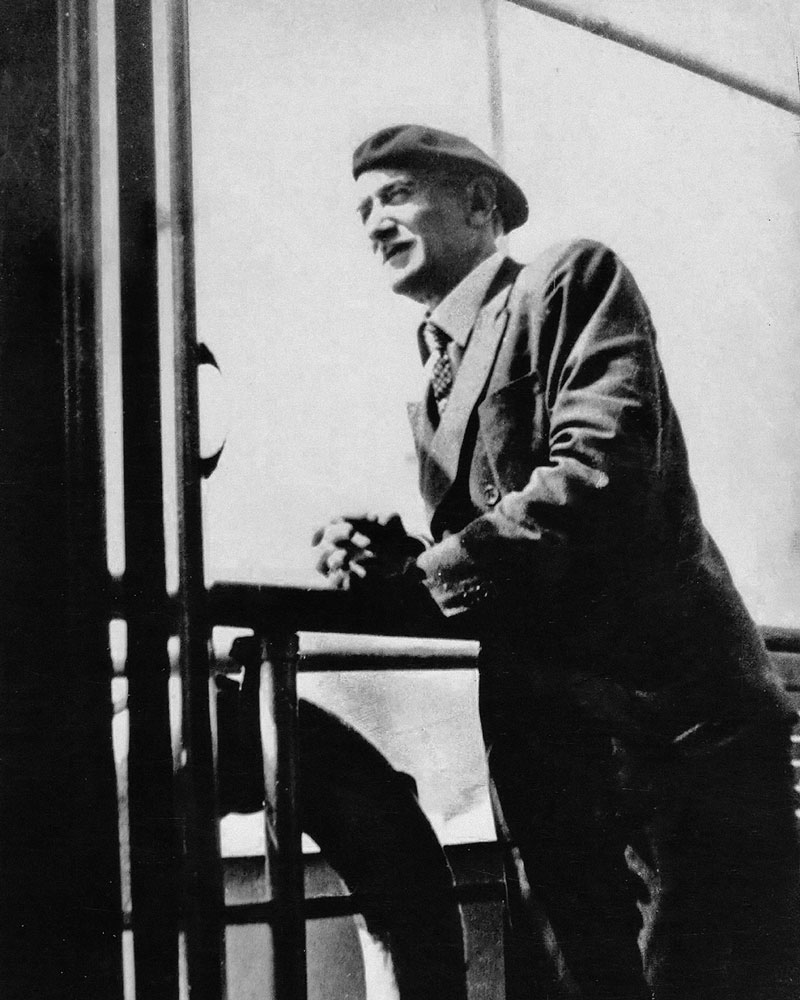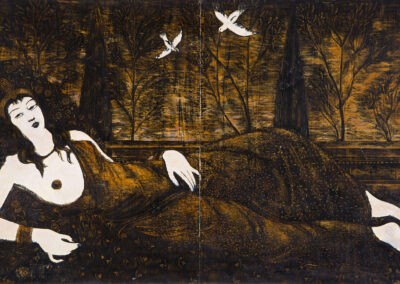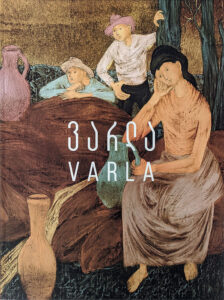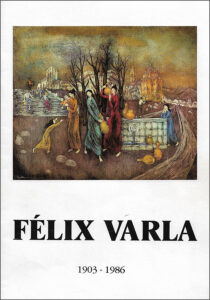Felix Varlamishvili
Images
Info

Felix Varlamishvili’s refined and sophisticated work incorporates features of both Western and Eastern cultures. Through his use of color, the artist recreates the effect of the brilliance of precious stones, and offers a contemplation of the illusion of eternity that is created in a conditional space thanks to the principles of iconography.
He tells viewers “stories” from the chronicles of daily life, including the motifs of work, leisure, hunting and fun. Sometimes the artist focuses on mythological, religious and historical issues, exchanging the neutral background for scenery, or stylized landscape motifs.
The artist leads everything to the world of fairy tales and the surreal. For him, everyday life is illuminated with sparks of beauty, loveliness, and eternity. He achieves this effect through harmonious and delicate interpretation of the scenes, subtle colors, and stylization of the shapes and contours. In his works, the shapes completely lose bodily matter and the artist, like the medieval masters, depicts the body as a vessel that serves as a delicate shell for the “repository” of the soul and a precious “utensil.” Varlamishvili’s works are influenced by Gothic sculptures and icons; they contain the “spirit” of El Greco and, at the same time, introduce a modernist interpretation of the image – where the body is transformed as a result of the vibration of emotions and feelings, channeled through the methods employed by the expressionists, in particular Egon Schiele.
Varla’s work combines Georgian and European themes, as well as symbols from diverse cultures. His colors shine with the splendor of Byzantine mosaics and medieval Georgian enamel; the schemes of compositions are based on the principles of iconography, while the style of Eastern miniatures strangely and boldly merges with Western configurations. The rhythm, theatrical presentation of the subject matter, the choreographic plasticity and elegance of the figures, the border between the real and the unreal, the image and charm of a distant homeland, the splendor of the textures, the exceptional artistic instinct, as well as the register of beauty, place Varla’s works in a humanistic cultural stream that functions thanks to the logic of harmonious human coexistence.
Baia Tsikoridze







